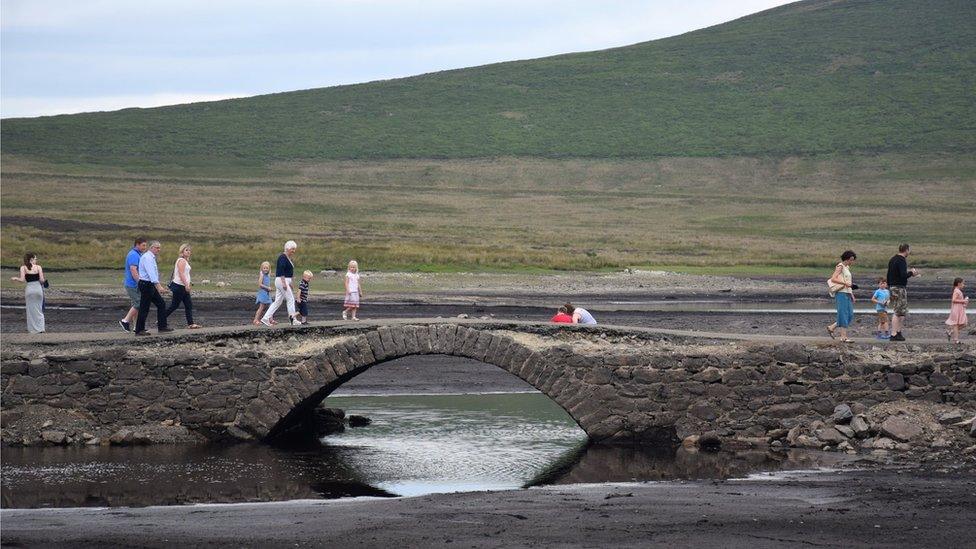Toys and Nazi soldiers - heat reveals history in Rostrevor
- Published
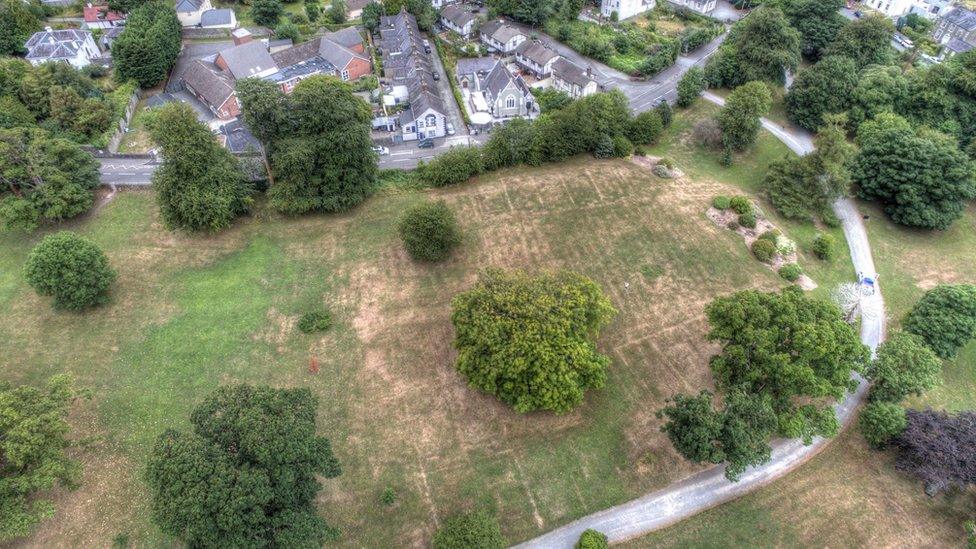
An aerial view showing the outline of the long forgotten Nissen huts
When temperatures rise, it's not just pasty legs and rusty barbeques that are uncovered.
The UK and Ireland have been experiencing a heatwave, the like of which hasn't been seen since 1976.
The heat has unearthed hidden gems - a path in Spelga Dam, County Down, and a new henge in Neolithic Newgrange in County Meath - to name but a few.
This week, an almost forgotten slice of modern history has come to light in County Down.
The scorching weather has revealed the outline of Nissen huts that made up a World War Two prison camp in Kilbroney Park, Rostrevor.

Patricia Strong said the weather had unearthed a "blueprint of history"
Made of steel, Nissen huts were designed in the 1900s for military use.
Patricia Strong from the Rostrevor Historical Society said that in the 1940s, the town had "a kind of invasion of various army people".
The British army built the huts, where they stayed for a while, before the US soldiers arrived, followed by German prisoners of war.
The US troops were getting a "crash course in combat", training in the hills and roads in the area, she explained.
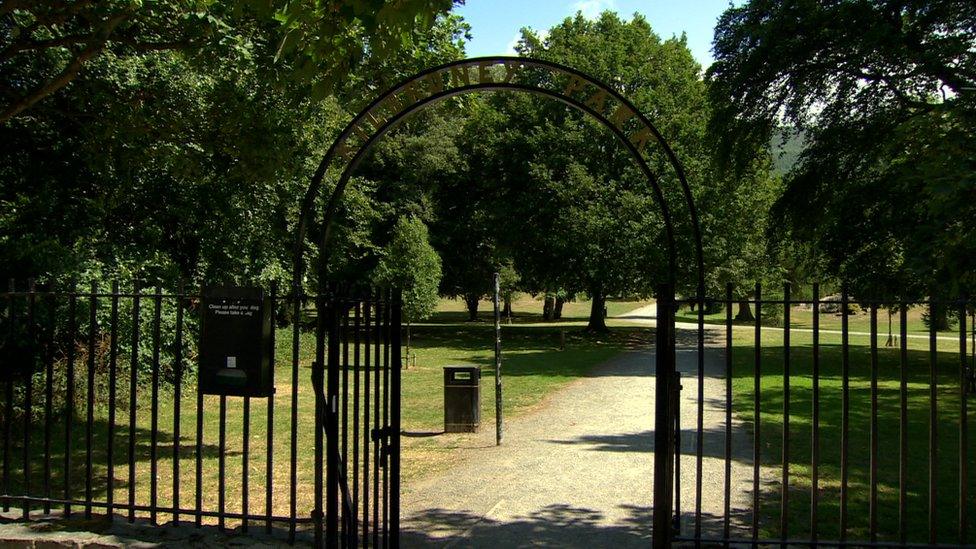
When the soldiers left at the end of the war, they were greatly missed by local people.
"Someone wrote about how when the Americans left, Rostrevor was almost deserted," said Mrs Strong.
"The children particularly missed them because they had sweets, chewing gum and toys."
However, their departure was followed by some surprise residents in the huts - German prisoners of war.
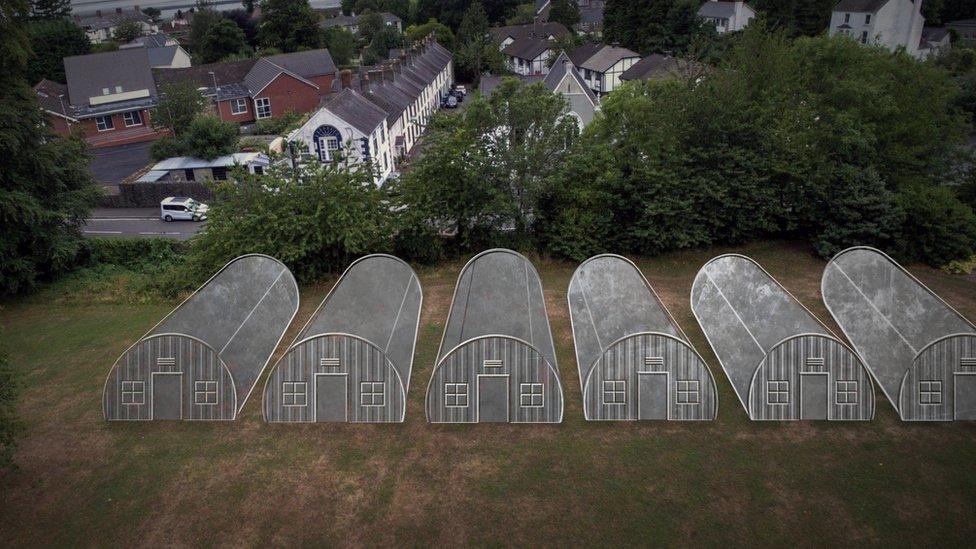
How the huts may have looked
Although there is relatively little recorded about the prisoners, they certainly made their mark.
"They were quite friendly," said Mrs Strong.
"Locals treated them as ordinary people who had suffered, as they had also been in the war and knew how awful it was."
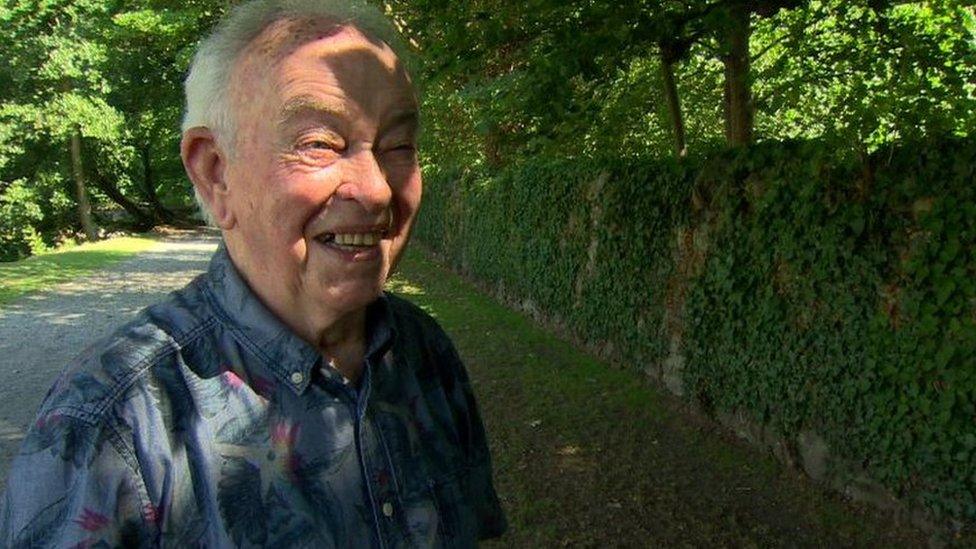
Raymond Parr remembers exchanging cigarettes for toys with the German soldiers over this wall
Soon trading began between the people of Rostrevor and the prisoners.
Raymond Parr, who was a boy at the time, said a wall in the park became a makeshift shop counter and the currency was toys.
He told BBC News NI that, as a child, he would offer woodbine cigarettes to the POWs in exchange for tin toys.

Raymond Parr bought a toy similar to one of those exchanged with German soldiers when he saw it on holidays
"The German prisoners of war would come down to the wall and they'd be looking for cigarettes," he said.
"You could get a little pecking bird made - all for two woodbine cigarettes.
"I don't know where I got the woodbine from, but we handed them the cigarettes and got that in return."
Decades later, he purchased a similar toy while on holiday abroad.
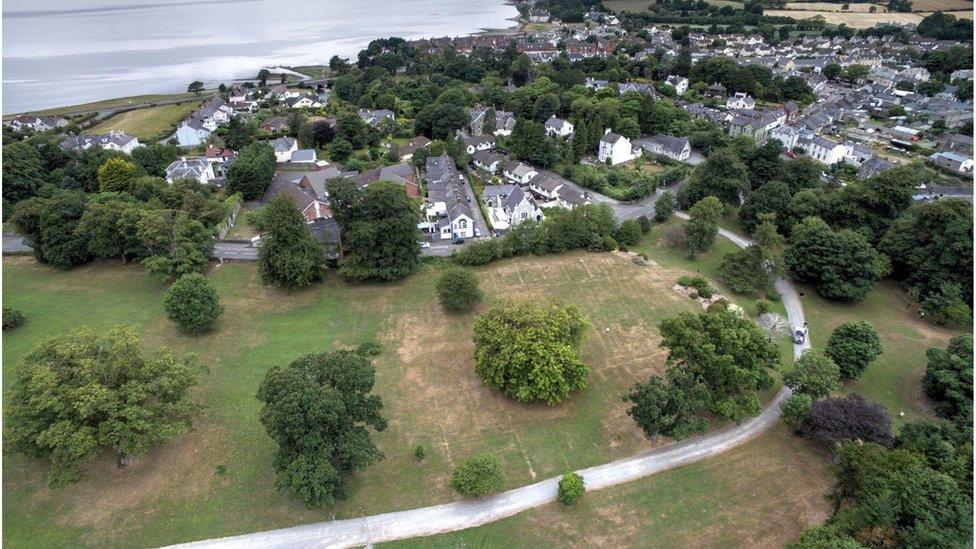
"When I saw it, I had to buy it as a reminder of the of Germans who had made them," he said.
Mr Parr also has memories of the US troops and in particular getting hit by a rogue baseball while the soldiers were playing.
"They carried me down, loaded me up with biscuits and jelly and carried me home. My father sent me back every day to try and get hit by the baseball again!"
Mrs Strong said she was delighted the weather had unearthed a "blueprint of history".
"It's proof it happened - older people can forget and not record it, but now it's recorded".
- Published26 July 2018

- Published11 July 2018
